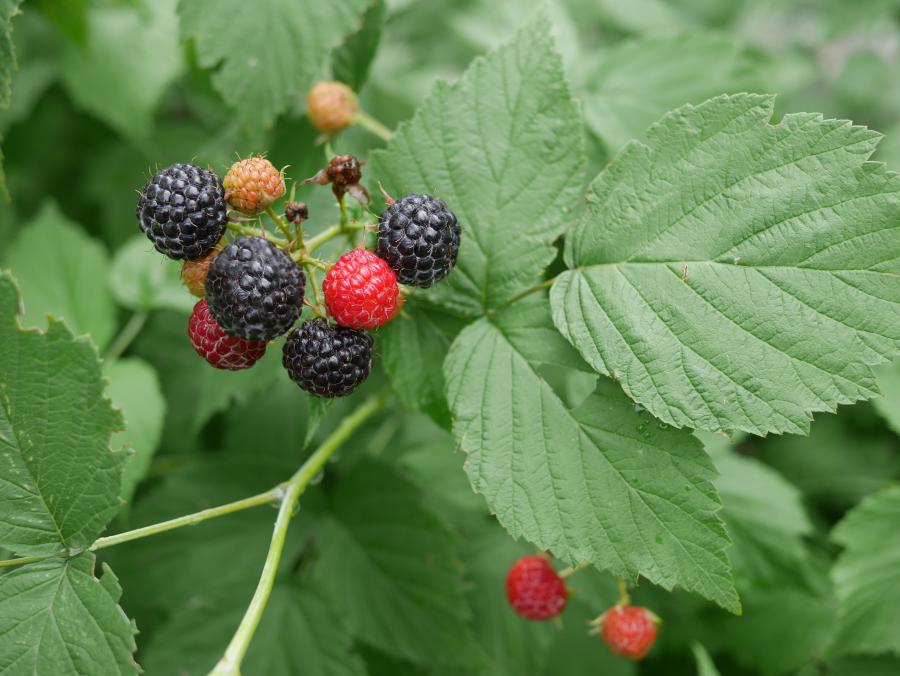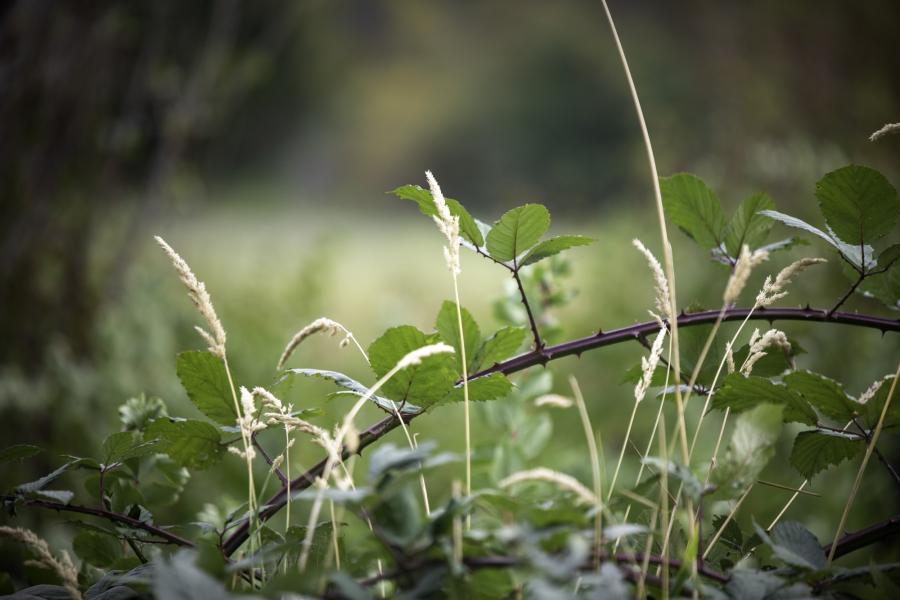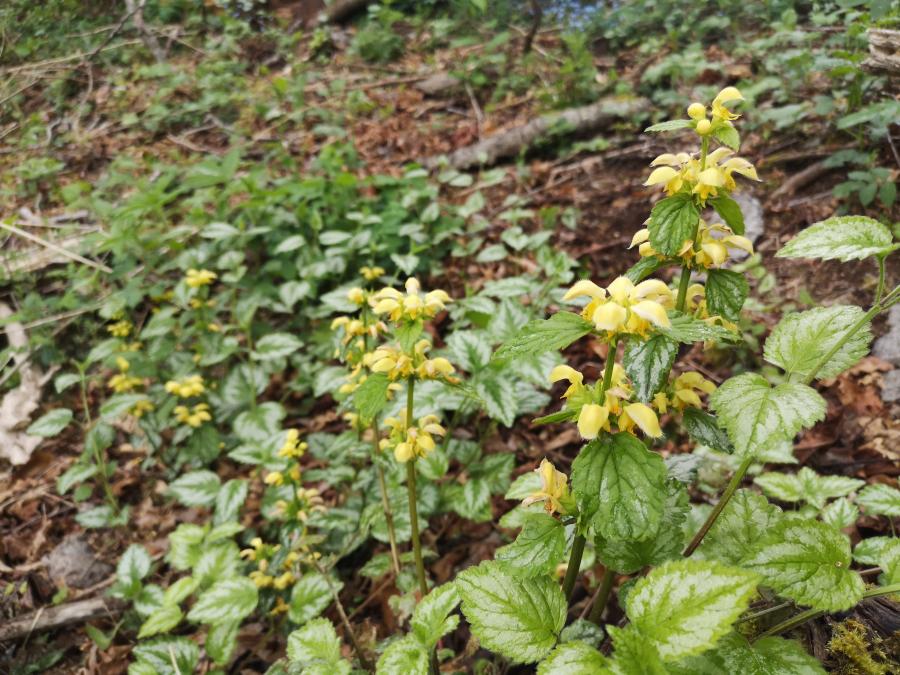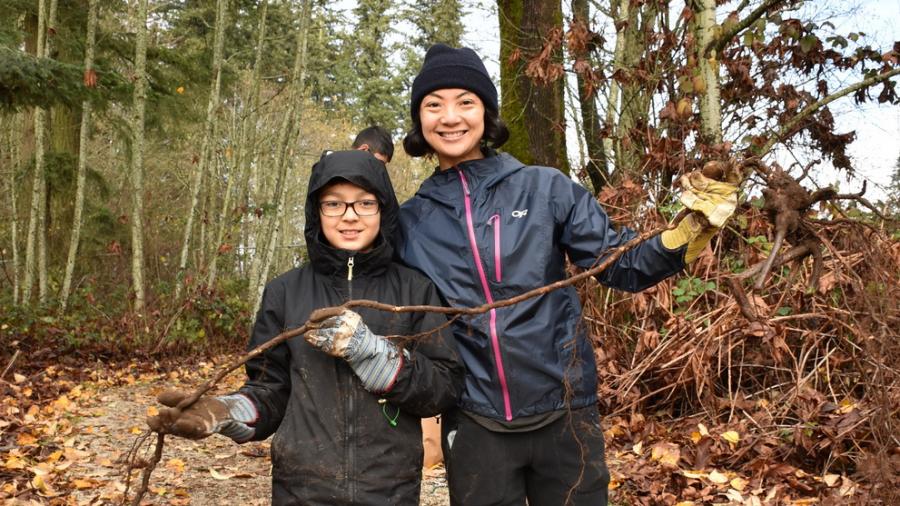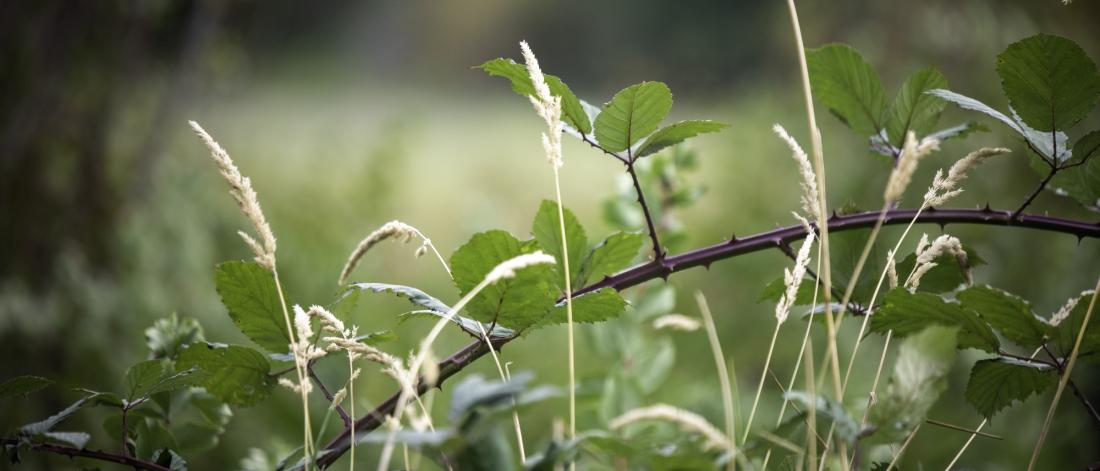
5 Actions to Help Stop the Spread of Invasive Plants
May is Invasive Species Action Month in B.C. Take action and help stop the spread of invasive plants in Surrey.
Invasive plants have negative impacts on our urban forest. Invasive plants lack natural predators or competitors and can quickly and easily take over the space for native plants to grow. Invasive plants are usually beautiful, and grow quickly and easily, making them a desirable plant for your garden. But don’t let these sneaky plants fool you—they cause more harm than good.
Not all non-native plants are invasive. There are some garden plants that aren’t native to the area but don’t cause harm to the natural habitat. Let’s start with some definitions:
- Native: a species that originates from and evolves with its surrounding habitat and has adapted to living in that ecosystem.
- Invasive: a species that outcompetes native species and harms the environment, economy, and/or society, including human health.
- Non-native: an introduced species that originates from somewhere other than its current habitat, and generally does not cause harm. Non-native species are sometimes referred to as “exotic”.
Himalayan blackberry (Rubus armeniacus) is probably the most well-known invasive plant in the Lower Mainland. Despite its name, this plant originally comes from Europe. In 1885, a botanist who loved its delicious berries brought the plant to America. Within 60 years, Himalayan blackberry spread along the Pacific coast and is now found in almost any green space in Surrey. It outcompetes our only native blackberry, the trailing blackberry (Rubus ursinus) which generally “trails” and grows along the ground. Trailing blackberry is much smaller than Himalayan blackberry. It has thin, smooth and flexible stems, leaves in groups of three, and smaller but more delicious blackberries! Himalayan blackberry is hard to miss – look for large, round leaves in groups of five that are darker green on top and lighter green underneath, small, white-pink flowers, sharp thorns, and of course, the big blackberries.
Most invasive plant introductions are unfortunately linked to people—whether it’s gardeners unknowingly planting an invasive plant in their garden or residents dumping yard waste in parks. The good news is that you can help stop the spread of invasive plants in Surrey. Instead of spreading invasive plants, spread knowledge!
Action 1: Properly dispose of your yard waste and keep it out of parks
Put yard waste from your property such as leaves, lawn trimmings, and plant cuttings into your organics cart or backyard composter. Yard waste in parks have negative impacts such as additional costs for cleaning up illegally dumped yard waste, more pests, increased fire risk, and more invasive plants. Did you know many hanging baskets contain invasive species like yellow archangel (Lamiastrum galeobdolon)? Please don’t throw hanging baskets over your fence or put other yard waste into a park.
You can dispose of extra yard waste in paper bags or in additional cans beside your organics cart. There is no extra cost for placing more bags or bundles of branches beside your cart. You can request a large or additional cart at surrey.ca/rethinkwaste. Fees may apply.
Action 2: Plant native plants
Plant and grow native plants, instead of invasive plants. Find the right plant for your garden.
Action 3: Volunteer to help remove invasive plants
Join a Nature Work Party to help remove invasive plants like Himalayan blackberry.
Action 4: Learn more about invasive species
Grow your knowledge about invasive species and "spread" it to your friends and family.
Action 5: Learn how to identify invasive species
Get familiar with identifying common invasive species in B.C. Some invasive plants like giant hogweed can cause injury to people. If you see this plant along City of Surrey roads, boulevards, ditches and in park land, please report it and call 604-501-5050.
Which actions are you going to commit to today?
Contact info
stewardship@surrey.ca
